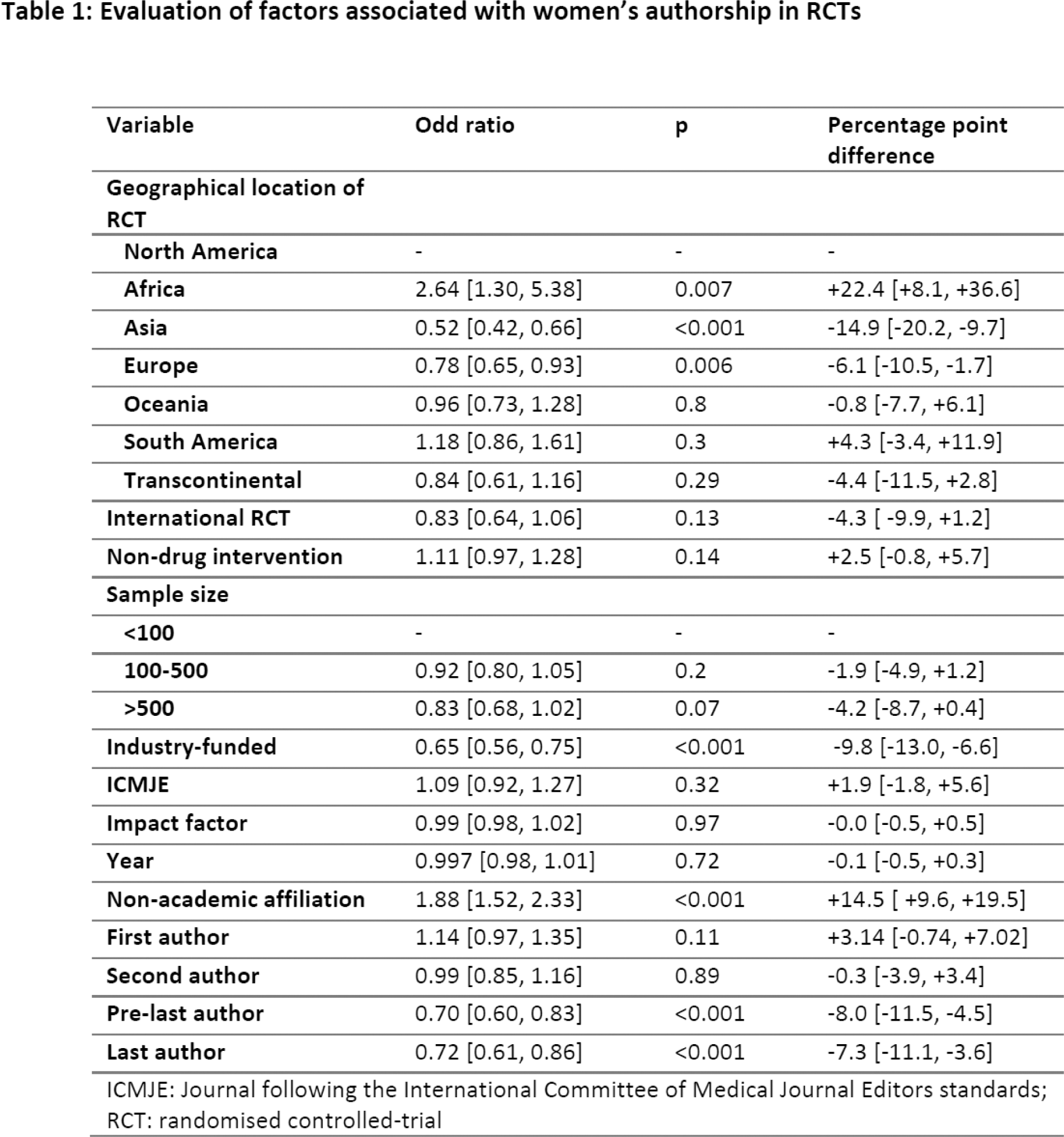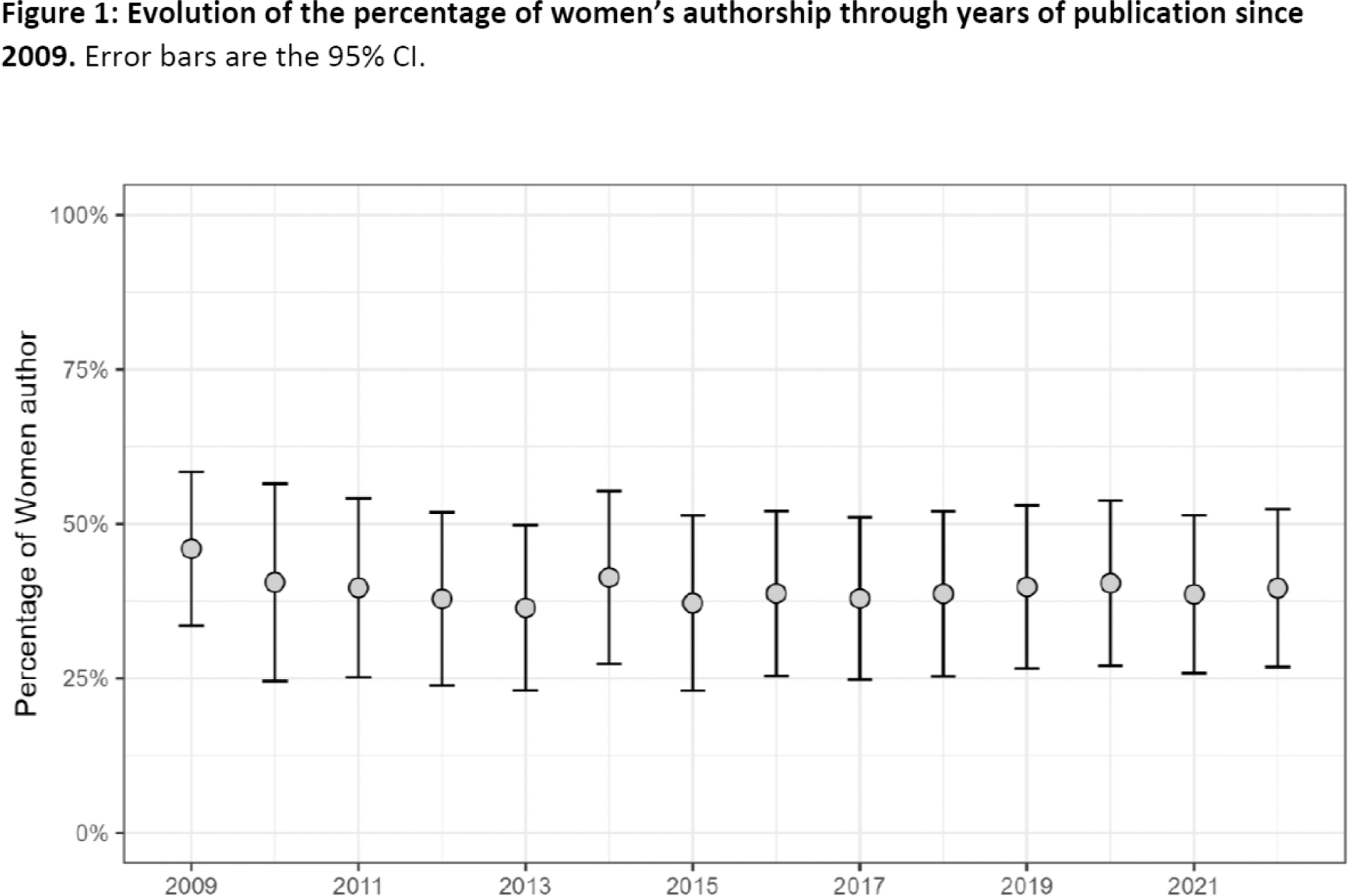

Background: Gender disparities in academia, particularly in medicine and rheumatology, persist despite some progress, with women facing challenges like underrepresentation in authorship roles, limited opportunities in leadership positions, and lesser credit for their work.
Objectives: This study aims to examine the evolution and influencing factors of women’s authorship in randomised controlled trials (RCTs) publications in rheumatology.
Methods: This study included all rheumatology RCTs published since 2009, identified using the MEDLINE Cochrane Highly Sensitive Search Strategy across journals listed in the 2022 Rheumatology category of the Journal Citation Reports, and in the five top internal medicine journals. Author details were obtained from MEDLINE metadata, trial information from the International Clinical Trials Registry Platform, and gender was determined using forenames and countries of affiliation via the gender API service, one of the most accurate tools available [1] .
The primary outcome was the gender of RCT authors, with covariates including the RCT’s continent, international collaboration status, industrial funding, intervention type, sample size, journal adherence to ICMJE recommendations, impact factor, publication year, author’s non-academic affiliation, and author position.
Statistical analysis involved generalised estimating equations, assessing the percentage of women in RCT publications and the impact of covariates. Two models were used: one examining factor influencing a woman being an author, and another including the gender of the last author as an additional covariate. Gender uncertainty was addressed through multiple imputation techniques.
Results: Of the 1,109 RCTs published since 2009, 54.3% of the RCTs concerned a drug intervention, 38.5% were based in Europe only, 23.9% in Asia, followed by North America and transcontinental RCTs. The conditions most often evaluated were osteoarthritis (20.0%), followed by rheumatoid arthritis (19.5%). These RCTs were authored by 11,103 people, and the overall estimated percentage of women authors was 39.5% (95%CI 38.0-40.9%). The odds ratio (OR) of having a woman author was increased in African-based RCTs (OR 2.64 [95%CI 1.3-5.8]; corresponding to a 22.4 absolute percentage point (pp) increase of women authors by RCTs, Table 1) but decreased in Asian-based (0.52 [0.42-0.66]; -14.9pp) and European based-RCTs (0.78 [0.65-0.93]; -6.1pp) compared to North America. The OR of the last author (0.72 [0.61-0.86]; -7.3pp) and pre-last author (0.70 [0.60-0.83]; -8.0pp) being a woman was lower but not first of second. There were also fewer women authors in industry-funded RCTs (OR 0.65 [0.56-0.75]; -9.8pp), but there were no difference looking at international status or sample size of the RCT. Non-academic affiliation increased the chance of having a woman author (OR 1.88 [1.52-2.33]; +14.5pp). There were no changes in the proportion of women authors by year of publication (Figure 1). Having a woman last-author increased the odds of having a woman as first author (1.54 [1.10-2.17]; +10.4pp).


Conclusion: The overall presence of women authors was 39.5%, with significant variations observed based on geographic location, authorship position, affiliation, and industry sponsorship. African-based RCTs showed a higher likelihood of female authorship, while Asian and European-based RCTs had lower odds compared to North America. Industry-funded RCTs also had fewer women authors. Positions like last or pre-last author were less likely to be held by women, highlighting the gender gap in senior roles. Intriguingly, RCTs with a female last author were more likely to have a female first author, suggesting a potential role-model effect. The stagnant year-over-year representation of women in RCTs underscores the urgent need for more effective strategies to bridge the gender gap in rheumatology research, especially in leadership roles and in regions with pronounced disparities.
REFERENCES: [1] Santamaría L, Mihaljević H. Comparison and benchmark of name-to-gender inference services. PeerJ Comput Sci. 16 juill 2018;4:e156.
Acknowledgements: NIL.
Disclosure of Interests: None declared.